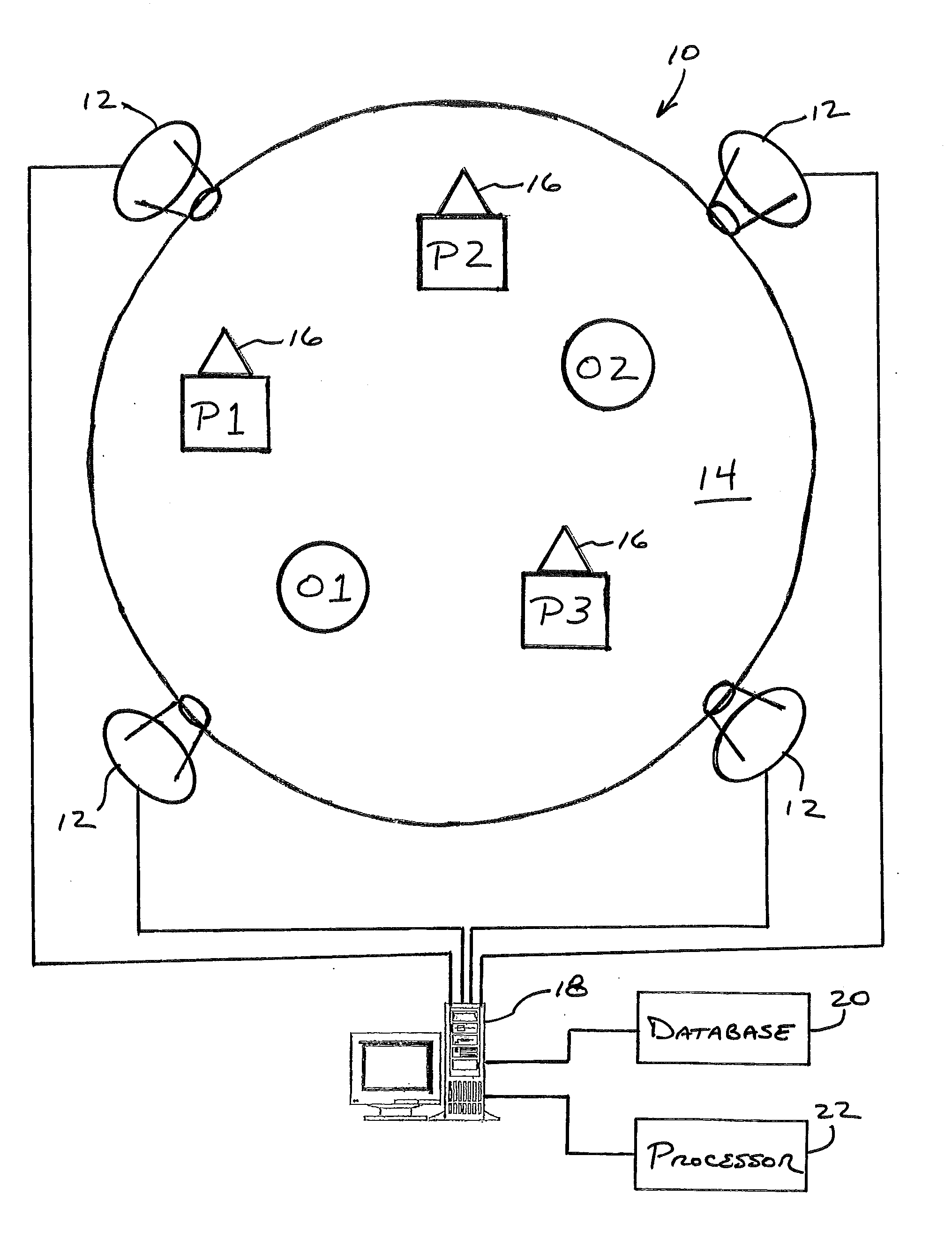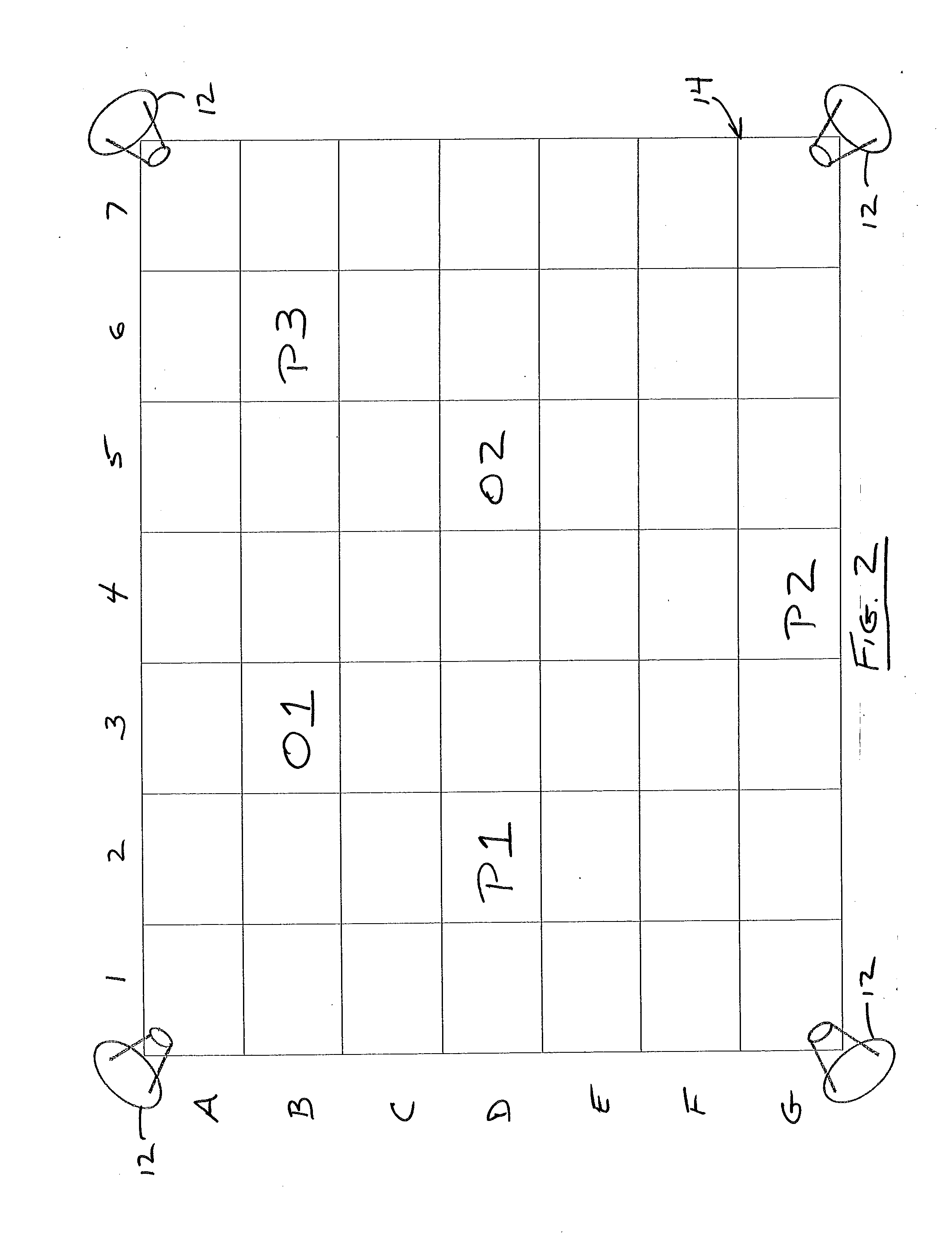System and Method for Tracking, Monitoring and Deriving the Location of Transient Objects by Monitoring the Location of Equipment Used to Move the Objects
a technology for transient objects and equipment, applied in the field of tracking, monitoring and locating transient objects, can solve the problems of innate weaknesses of manual entry, system inability to tell where on the dock the shipment is, and inability to know if an item or component is on the dock
- Summary
- Abstract
- Description
- Claims
- Application Information
AI Technical Summary
Benefits of technology
Problems solved by technology
Method used
Image
Examples
Embodiment Construction
[0029]Referring to FIG. 1, a system for tracking, monitoring and deriving the location of transient objects is shown generally at 10. The system 10 includes a plurality of receivers or readers 12 placed about a predefined area 14 to be monitored. As used herein, the terms receiver and reader are used to denote the same or similar device. The predefined area 14 may be any area where transient objects are stored and their location needs to be monitored, such as, for example, a dock, a bay, a warehouse, etc. The receivers 14 should be placed such that they provide coverage for the area 14 to be monitored. While four receivers 12 are shown in FIGS. 1 and 2, any number may be implemented in accordance with the present invention.
[0030]Within the area 14 to be monitored, there are a number of objects O1, O2 which are to be moved and stored within the area 14. Pieces of equipment P1, P2, P3 are used to move the objects O1, O2 within the area 14. The pieces of equipment P1, P2, P3 may be mot...
PUM
 Login to View More
Login to View More Abstract
Description
Claims
Application Information
 Login to View More
Login to View More - R&D
- Intellectual Property
- Life Sciences
- Materials
- Tech Scout
- Unparalleled Data Quality
- Higher Quality Content
- 60% Fewer Hallucinations
Browse by: Latest US Patents, China's latest patents, Technical Efficacy Thesaurus, Application Domain, Technology Topic, Popular Technical Reports.
© 2025 PatSnap. All rights reserved.Legal|Privacy policy|Modern Slavery Act Transparency Statement|Sitemap|About US| Contact US: help@patsnap.com



